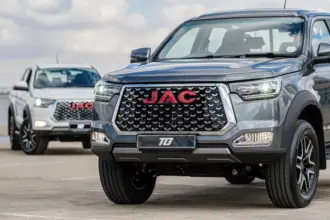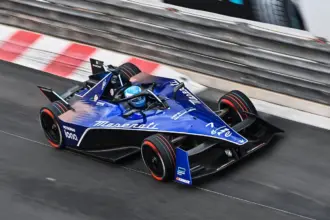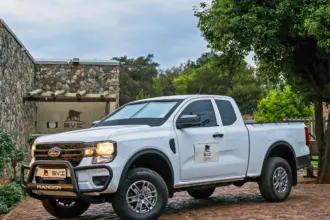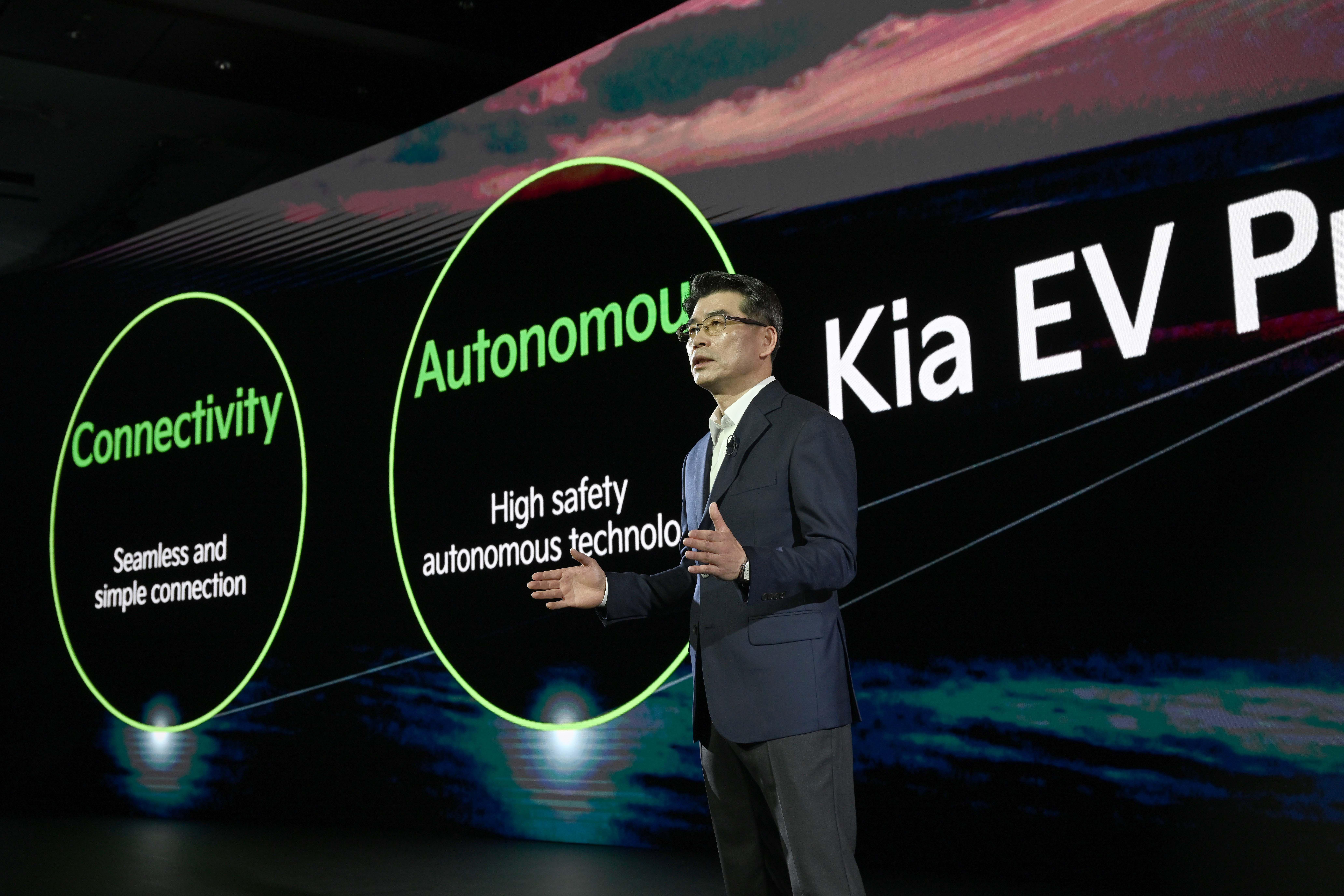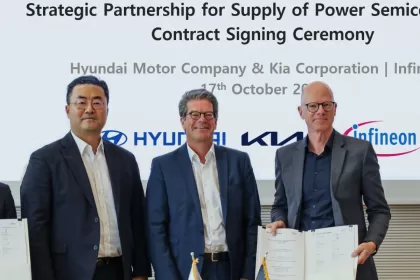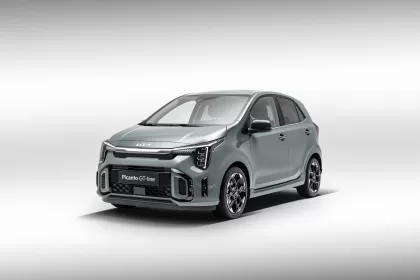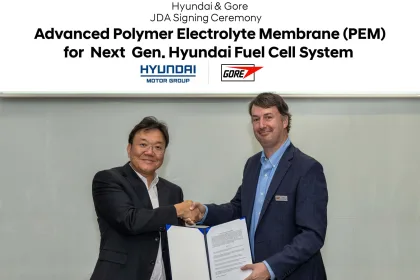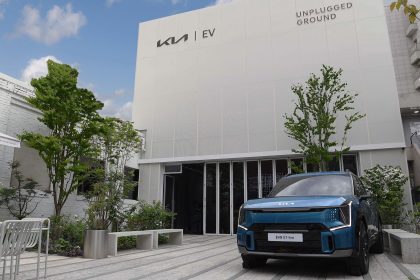Kia to continue its four core strategies to transform into a ‘Sustainable Mobility Solutions Provider’
① Global sales: 2030 global sales goal of 4.3 million units
② Electrification: Annual EV sales goal of 1.6 million units by 2030 with 15 EV models by 2027
③ Product Strategy: Kia to apply connectivity to all new models by 2025
④ Purpose-Built Vehicles (PBV): To establish a tailored business structure and offer an integrated solution for PBV; launch a dedicated PBV in 2025
– 2030 financial targets: gross revenue of KRW 160 trillion, operating profit KRW 16 trillion, operating profit margin of 10%
– Kia to invest KRW 32 trillion won over next five years, with 45% dedicated to future business areas
Kia Corporation (Kia) today provided an update on its future strategies through the Kia CEO Investor Day event held in Seoul, Korea.
Kia has updated its mid- to long-term business strategy with a focus on electrification. Kia’s updated 2030 annual sales target is 4.3 million units, of which 2.38 million units will be electrified vehicles. The financial targets have also been increased to KRW 160 trillion in gross revenue, 16 trillion won in operating profit and 10 percent in operating profit margin.
Kia first unveiled its mid- to long-term strategy entitled ‘Plan S’ in 2020, which focuses on a pre-emptive transformation towards an EV-focused business and providing customized mobility solutions. Since then, Kia has held a CEO Investor Day every year to present updates on the company’s future vision and goals.
During the 2023 CEO Investor Day, Kia announced updated goals and specific details of its business strategy. Kia’s 2030 global sales target of 4.3 million units is 34.4 percent higher than its 2023 annual sales target of 3.2 million units. It also plans to become a leading EV brand by raising the proportion of electrified car sales to 55 percent (2.38 million units) in 2030. This is a 7.5 percent (300,000 units) increase from the 2030 target announced in 2022, while the global sales target for electrified vehicles has increased by 15.5 percent (320,000 units).
“In 2021, Kia went through a full-scale transformation of its corporate name, logo, product and design, as well as corporate strategy. As a result, our brand value has improved significantly, helping us to win a number of ‘Car of the Year’ awards in key markets,” said Kia President and CEO Ho Sung Song. “In order to become a Sustainable Mobility Solutions Provider, Kia needs to continue its efforts to strengthen Kia brand identity and establish an innovative and customer-centric business model.”
Key within the refreshed sales targets, Kia increased its 2026 annual EV sales target to 1 million units and 2030 EV sales target to 1.6 million units annually, representing a 25 percent increase and 33 percent increase, respectively, from goals announced a year earlier.
The update is based on Kia’s confidence in its award-winning products. The EV6 won the ‘2022 European Car of the Year’ and ‘2023 North American Utility Vehicle of the Year.’ Kia now plans to build an EV lineup of 15 models by 2027, including the flagship model EV9 revealed recently. This is one more than the ‘14 models by 2027’ announced a year earlier.
It will continue to implement new technologies on its product and apply connectivity features to all new models released after 2025, allowing customers to update and optimize vehicle performance through over the air (OTA) updates. Regarding autonomous driving technology, the EV9 will feature HDP (Highway Drive Pilot), a conditional level three autonomous driving technology, which allows the driver to operate the vehicle “hands-off” under specific conditions. In 2026, Kia plans to introduce HDP2 technology that will support “eyes-off” driving under certain conditions.
The 2023 CEO Investor Day event also provided a detailed blueprint for the purpose-built vehicle (PBV) business. The company plans to launch a mid-size dedicated PBV model in 2025 at a dedicated PBV production facility in Hwaseong, and will gradually build a full lineup of PBVs, ranging from small to large, including a robo-taxi with autonomous driving technology.
In addition, the company plans to commercialize data and software-based solutions to introduce customized products and services for diverse needs of customers, and to develop mobility services in connection with Hyundai Motor Group’s Advanced Air Mobility (AAM) and robotics businesses.
Kia also aims to continue improving customers’ positive brand perception and competitiveness of its business in order to achieve mid-to-long term financial performance. The long-term financial goals include growing gross revenue to KRW 160 trillion in 2030, an 84 percent increase from 2022; increasing operating profit to KRW 16 trillion, a 122 percent improvement over 2022; and increasing operating profit margin to 10 percent, a 1.6 percentage points uplift over 2022.
Kia also plans to continue to expand investment to secure future competitiveness. It plans to invest KRW 32 trillion over the next five years until 2027. In particular, Kia aims to increase the portion of investment in future businesses to 45 percent.
Kia to continue the ‘four core goals’ of its 2030 strategy
Kia is witnessing the positive outcome from implementation of its Plan S strategy over the past three years and is establishing a strong position as a leading global EV brand. The company will maintain momentum and will continue to pursue its four core goals set last year to achieve its new goals for 2030: global sales of 4.3 million units; accelerating the EV transition with an EV sales target of 1.6 million units; strengthening product competitiveness with a focus on autonomous driving technology and connectivity; and establishing a tailored PBV business structure.
1) 2030 annual global sales target of 4.3 million with a focus on electrified vehicles
Kia aims to create growth momentum that outperforms the wider market growth with its competitive products and enhanced brand perception. Kia also expects issues resulting from the Covid-19 pandemic and the parts shortages to gradually improve to support the sales growth.
Starting with this year’s global sales target of 3.2 million units, Kia has set a goal of achieving 4.01 million units in 2026 and 4.3 million units in 2030, up 150,000 units for 2026 and 300,000 units for 2030 from the targets announced last year.
The sale of electrified vehicles will drive the growth, with its sales proportion expected to increase from 21 percent in 2023 to 55 percent by 2030, a 3 percentage points increase from the 2030 previous target announced last year.
2) Accelerating EV Strategy: Expanding to 15 EVs in 2027, targeting 1.6 million EV sales in 2030
Kia plans to further accelerate its electrification efforts to strengthen its position as a leading brand in the global EV market.
First, it plans to further expand its electric vehicle product lineup. By 2027, Kia will introduce its EV lineup consisting of 15 models that includes the EV9 and the EV5, adding one additional model from last year’s plan.
Revealed in March this year, EV9 aims for an all-electric WLTP target driving range of over 541km, an ultra-fast 800 volt charging system that replenishes the battery pack with sufficient charge to power the vehicle for 239km in approximately 15 minutes [1]and impressive athletic performance which enables the SUV to surge from 0-to-100km/h in 9.4 seconds for the RWD Long Range model, 8.2 seconds for the Standard RWD and 6.0 seconds (or 5.3 seconds with an optional Boost feature) for the AWD variant.
In line with Kia’s transition to developing Software Defined Vehicles (SDV), the EV9 incorporates over-the-air (OTA) updates and the ability to continuously upgrade their vehicles through the Kia Connect Store for customers who seek greater control and customization.
The EV9 will be the first Kia model to include the more advanced autonomous driving technologies, namely the HDP (Highway Driving Pilot), which offers conditional level three autonomous driving.
With the expansion of its EV lineup, Kia plans to rapidly increase EV sales. Starting with a target of 258,000 units of EV sales this year, the company has set a goal of selling 1,005,000 electric vehicles in 2026 and 1.6 million units in 2030, up 400,000 units (33 percent) from its target of 1.2 million units announced during the CEO Investor Day last year.
In order to respond to fast-growing EV markets around the globe, Kia aims to locally produce strategic models that drives regional sales.
In Europe, Kia plans to locally produce small and mid-sized EVs, as they are the key drivers of sales in the region. In the U.S., Kia also aims to produce key EV models locally, beginning 2024, in line with implementation of the Inflation Reduction Act (IRA).
Kia in China plans to produce small and medium-sized EV models, including the recently unveiled EV5, and India will also produce small EV models optimized for the local market and other emerging markets from 2025.
Korea will serve as a global hub for research, development, and production of EV models. Kia will build its first dedicated EV factory in Korea in 2024. Kia will convert the production line of factory in Gwangmyeong for EV production, planning to start production of two EV models next year.
Gwangmyeong EV factory will maximize production capacity by introducing cutting-edge innovative technologies such as 3D virtual reality process; data-based integrated manufacturing platform; and unmanned and automated facilities. It will also achieve a reduction in carbon emissions through use of eco-friendly paint and energy saving technologies.
3) Future technology focused product strategy and development system for SDV
Kia has identified connectivity services; autonomous driving technology; performance; and design as its four key product attributes to lead the future mobility market and develop differentiated products.
Following the plan announced last year, Kia will also build a connected car data cloud and apply connectivity features to all newly launched vehicles from 2025. Its wide array of OTA services and additional features available features available at the Kia Connect Store will help customers to choose features tailored to their lifestyle and keep them up-to-date at all times.
Kia’s autonomous driving technology AutoMode will also be enhanced starting with the EV9. HDP, a conditional level three autonomous driving technology that does not require human steering wheel control for certain road sections, such as highways, will be applied to EV9 for the first time this year.
By 2024, the company plans to implement partial eye-off functions under certain conditions by enhancing the feature through OTA updates and raise the maximum speed of autonomous driving and improve road recognition rates. In 2026, Kia plans to further strengthen the autonomous driving with HDP2 technology that utilizes high precision navigation.
In addition, Kia plans to focus its capabilities on securing high performance and differentiated design as key elements of product competitiveness. The high-performance GT trim will be developed not only for the EV9 but also for all future EV models.
Regarding design, Kia will implement user-friendly design based on philosophy of “Opposites United”, while actively adopting ESG management approaches, such as recycling and use of non-toxic materials and biomaterials. For instance, 34 kilograms of eco-friendly materials have also been applied to various parts of the EV9, and the proportion of recycled plastic applications will be increased to 20 percent by 2030.
To support and strengthen these four core product strategies, the vehicle development system will be restructured for SDV. The goal is to develop software that has integrated control over various systems and hardware that accelerates the vehicle development process and lower the associated costs.
Furthermore, Kia plans to strengthen personalization services provided to customers, reduce initial purchase and operation costs of vehicles, ensuring both high product quality and residual values.
4) Establishing a tailored business structure for PBV
Kia has started its Purpose-Built Vehicle (PBV) business with an understanding that PBV business will serve as one of the company’s key future businesses. Kia is developing PBV business with a focus on the needs of customers and is involving them from the development stage of PBV in order to offer customized PBV solutions. For instance, Kia last year unveiled to potential customers a dedicated PBV in its development stage due for mass production in 2025, in order to collect feedback.
In terms of production, the company is building a PBV factory in Hwaseong. The dedicated PBV, to be unveiled in 2025, will be developed as medium-sized PBV for use in wide variety of businesses, and has a structure in which various types of bodies can be placed on a flat skateboard-type platform, allowing the size and shape to be adjusted according to the purpose and needs.
In line with the expansion of the PBV market, Kia aims to gradually expand its PBV lineup to include a PBV robotaxi with autonomous driving; a small PBV optimized for delivering goods or food; and a large PBV that can replace public transportation or be used as a mobile office.
■ Strengthening ESG management and seeking new business utilizing Hyundai Motor Group initiatives
Kia is stepping up its ESG management efforts by establishing a mid- to long-term roadmap in 2020 and announcing its Carbon Neutrality goals in 2021.
Kia plans to fully change to renewable energy for electricity use in global worksites by 2040 and achieve 100 percent electrification in four key markets (Korea, US, Europe and China) by 2040.
Under this goal, Kia reduced its carbon emissions by 4.5 percent in 2022 compared to 2019. Going forward, Kia will continue reducing carbon emissions to achieve net zero in all stages of the value chain, including supply, production, logistics, and disposal, as well as the customer use stage of automobiles, by 2045.
Use of recycled plastics and biomaterials, applied to the EV9, will be expanded to all future models. Kia has been working with the Ocean Cleanup, a global environmental non-profit organization, to collect waste plastic from the ocean and putting it to reuse as vehicle accessories in 2024 and vehicle parts in 2026.
Regarding Hyundai Motor Group’s future projects, such as advanced air mobility (AAM) and robotics, Kia will not only make investments but also continue to make efforts to create new business opportunities. With a clear focus on PBV as future key business, Kia will also review various business opportunities that involves AAM and vertiport, logistics robot Stretch, and last mile mobility.
■ Announcing targets for 2023 and 2030
During the Investor Day event, Kia announced detailed 2023 business plans and mid- to long-term financial goals.
Kia announced its 2023 sales goal of 3.2 million units, up 10.3 percent from the previous year, and achieving a 4 percent share in the global automobile market aiming to outperform global automotive market growth.
Kia’s new products this year include EV9, which opens for pre-order in the Korean market during the second quarter of 2023, and subsequently be launched in other key markets. EV5 will be launched in China in the fourth quarter, Ray EV in the third quarter, small subcompact Rio in the fourth quarter from Kia’s Mexico plant, and five product enhancement models.
Kia will continue to improve its sales mix focusing on highly profitable models and higher trims based on Kia’s enhanced brand perception and strong product lineup and increase the average price per vehicle. Through these measures, Kia is looking to achieve financial targets of KRW 97.6 trillion in gross revenue (up 12.7 percent from the previous year); KRW 9.3 trillion in operating profit (up 28.6 percent); and 9.5 percent (up 1.1 percent) in operating profit.
As its 2026 financial targets, Kia proposed gross revenue of KRW 134 trillion; operating profit of KRW 12 trillion; and operating profit margin of 9 percent. For 2030, Kia aims to achieve gross revenue of KRW 160 trillion; operating profit of KRW 16 trillion, and an operating profit margin of 10 percent.
Key factors in achieving mid- to long-term goals include improving the profitability of EV sales by reducing costs for key parts and expanding sales, and securing additional revenue streams via software and services commercialization with OTA and feature updates.
Especially, EV contribution to profit is expected to increase from 5 percent in 2022 to 32 percent in 2026, and by 2030, it is expected to expand to 53 percent, more than half of Kia’s total profit.
Kia is aiming to lower the cost of batteries by 25 percent compared to prices in 2018 by year 2026. In addition, the company aims to achieve further reductions in battery costs by 55 percent compared to 2018 prices by 2030. By 2030, Kia also aims to lower the cost of the motor and integrated charging system by 70 percent compared to 2018 prices.
Regarding the investment plan for the next five years from this year to 2027, Kia will invest a total of KRW 32 trillion of which 45 percent will be dedicated to future business investments.
Kia also shared its mid- to long-term dividend policy aimed at enhancing shareholder value. Kia has decided on a dividend payout ratio at 20-35 percent to retain investment capability, expand financial flexibility and enhance shareholder value.
Furthermore, with a confidence in its long-term profitability, Kia aims to execute a share buyback program to enhance shareholder value for next five years. For the duration of five years, Kia aims to purchase up to KRW 0.5 trillion worth of shares each year and cancel at least 50 percent of the repurchased shares.



